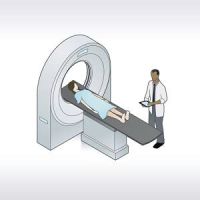Researchers investigated the robustness and generalisability of a deep learning network for deriving synthetic CT from MRI of head neck cancer patients and found they were similar to those based on CT, suggesting a robust and reliable method.
Radiotherapy planning based only on PET/MRI lacks CT information required for dose calculations. In this study, published 26 July in Advances in Radiation Oncology, a deep learning model for creating synthetic CT (sCT) from MRI in head and neck cancer patients which was previously developed was examined using two scenarios: i) using an independent external dataset, and ii) using a local dataset after an update of the model related to scanner software-induced changes to the input MRI.
In this small, multi-centre study, six patients from an external site and 17 patients from a local cohort were underwent a CT and a PET/MRI with a Dixon MRI sequence over either one (external) or two (local) bed-positions. For the external cohort, a previously developed deep learning model for deriving sCT from Dixon MRI was directly applied. For the local cohort, investigators adapted the model for an upgraded MRI acquisition using transfer learning and evaluated it in a leave-one-out process. The sCT mean-absolute-error (MAE) for each patient was assessed. Radiotherapy dose plans based on sCT and CT were compared by assessing relevant absorbed dose differences in target volumes and organs-at-risk (OARs).
The authors sought to test the robustness and generalisability of this deep learning method for deriving sCT from MRI for radiotherapy usage and they found that the derived sCT images produced radiotherapy dose distributions that were indeed very similar to those calculated on the reference CT suggesting a robust and reliable method.
Besides the challenge of accurate dose calculation, the researchers note that radiotherapy planning using solely PET/MRI is challenging because of reliable patient positioning (not an issue in this study); the ability of the sCT to match with cone beam CT as a means to determine couch movement on the linac; geometric distortions for MRI; and finally attenuation correction of PET. The authors discuss these challenges in a previous study currently submitted for publication.



























